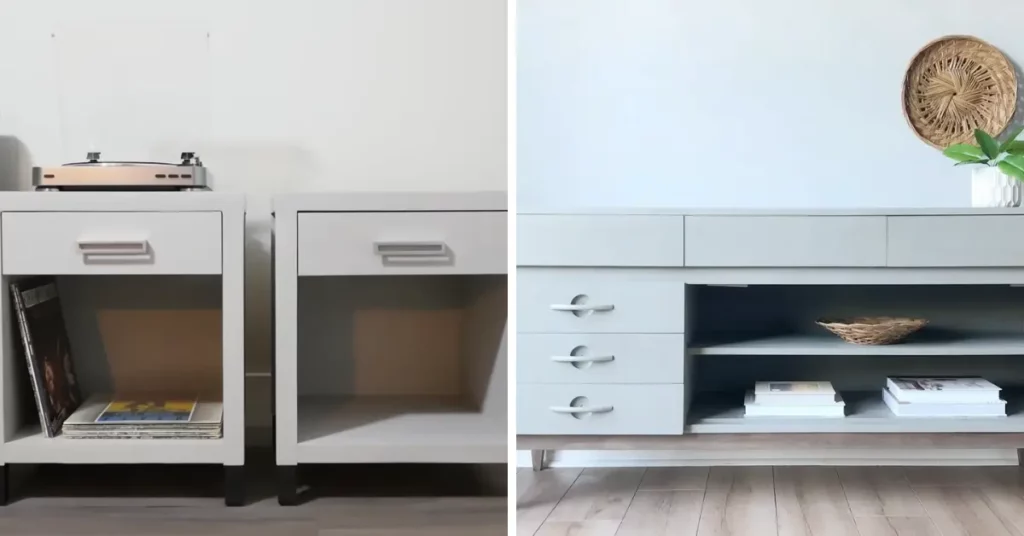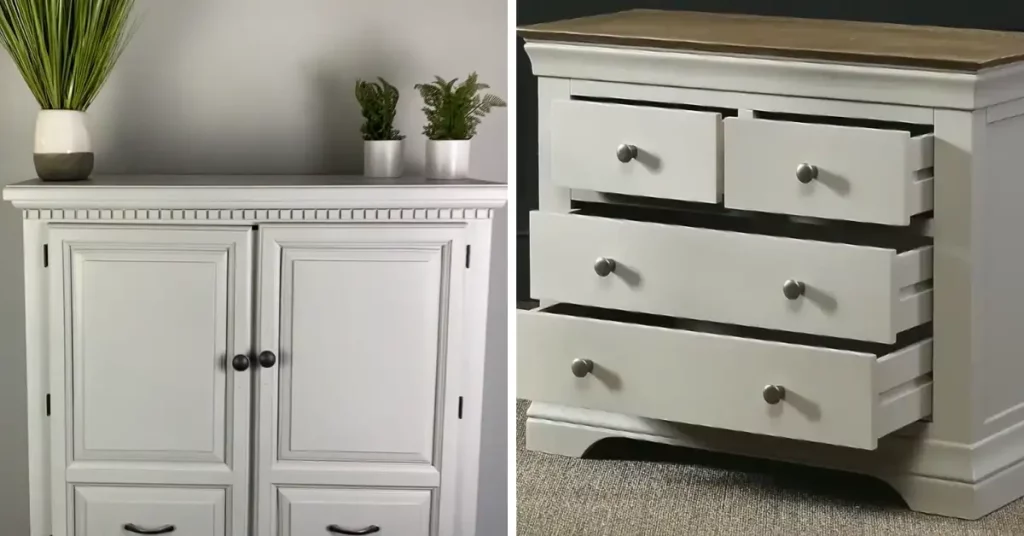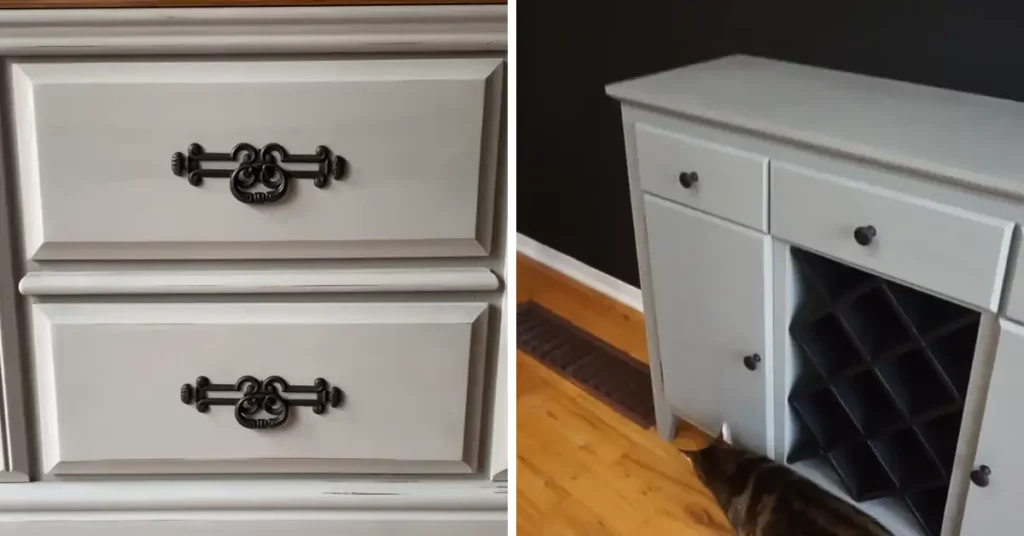Are you planning to give your room a makeover and looking for the perfect paint job? Rustoleum Aged Gray vs Country Gray paints provides you with two great options to choose from.
Both of these rust-resistant paints boast incredible coverage and durability, but there are some notable differences between them. And when it comes to deciding between the two, understanding those nuances is key.

Let’s explore how they differ in terms of hue, texture, drying time, application, weather resistance, surface compatibility, and more.
Here Is a Comparison Guide between Rustoleum Aged Gray vs Country Gray Paint
This comparison guide will provide an in-depth look at both Rustoleum Aged Gray and Country Gray to select the perfect hue for your space. We’ll explore the distinctive characteristics of each paint and overall aesthetic appeal to help you make an informed decision.
01: Hue
The two shades of Rustoleum paint, Aged Gray and Country Gray, have distinctly different hues. Aged Gray has a slightly cooler tone than Country Gray, which has a warmer, more beige undertone.
To the eye, Aged Gray appears to be a light gray with a blueish hue, while Country Gray has more of a taupe or khaki color with subtle yellow undertones. Furthermore, both hues work well when paired with whites and other shades of gray.
02: Finish
The finish of these two paints is also quite different from one another. Aged Gray’s matte finish offers any room an understated and subdued look. This can create a timeless aesthetic that never goes out of style.
On the other hand, Country Gray has a satin finish that adds more warmth and vibrancy to the room it’s in. The satin finish gives off an inviting atmosphere that encourages people to linger for longer periods.
03: Texture
Regarding texture, there is also quite a bit of difference between Rustoleum Aged Gray and Country Gray paint.

Aged Gray creates a slightly textured finish that can add character and depth to any wall or ceiling it’s applied to. This can create visual interest in spaces where you want to add contrast or texture without being too over-the-top.
In contrast, Country Gray creates a smoother finish that still provides some depth but keeps things looking neat and clean.
04: Coverage
In terms of coverage, Aged Gray provides better coverage in one coat than Country Gray does due to its thicker consistency and heavier pigmentation level.
Consequently, this means you will need fewer coats of paint for larger projects if using Aged Gray compared to using Country Gray instead, saving you time and money overall.
05: Drying Time
When it comes to drying time, Rustoleum Aged Grey wins here as well. It dries faster than Country Grey without compromising color intensity or quality. This makes it ideal when you need your project finished quickly but still want excellent results when all is said and done.
06: Application
Applying Rustoleum Aged Gray paint is easier than Country Gray due to its thicker consistency and greater coverage. As a result, it can be applied more evenly with fewer brush strokes and less waste.
And the paint dries faster than Country Gray, making it a better choice for those looking to complete their project quickly.
07: Durability
Aged Gray is more durable than Country Gray because its advanced formula resists scratches, chips and fading. Also, it’s waterproof and highly resistant to peeling and cracking when exposed to extreme weather conditions like high humidity or harsh winter temperatures.
On the other hand, Country Gray is less resilient than Aged Gray in these areas, making it less suitable for outdoor applications.
08: Weather Resistance
Aged Gray is more resistant to fading and damage from sunlight and other weather elements than Country Gray. Its superior protective qualities help protect surfaces from UV radiation as well as extreme temperature fluctuations.

It also provides better protection from moisture damage, such as peeling, cracking, or bubbling caused by exposure to rain or snow.
09: Surface Compatibility
Rustoleum Aged Gray can be used on a variety of surfaces, including wood, concrete, masonry and metal, without any special preparation or primer required.
In contrast, Country Gray may require additional steps, such as sanding or priming, before application depending on the painted material.
10: Use
Aged Gray is best suited for indoor use, while Country Gray can be used both indoors and outdoors due to its superior resistance to moisture damage.
Both paints offer superior coverage with fewer coats needed, but Aged Gray excels at providing a professional finish indoors with its smooth texture and low-odor properties.
Is Rustoleum Aged Gray or Country Gray Paint Better for A Distressed Look?
Rustoleum Aged Gray and Country Gray paints are both excellent options for creating a distressed look. But there are other hue differences between the two. Rustoleum Aged Gray has a slightly darker grayish-brown hue, which makes it ideal for a heavily weathered and worn look.
On the other hand, Rustoleum Country Gray is lighter in color and offers a more subtle, rustic appearance that looks great when painted on furniture or other objects with a vintage feel.
Can I Mix Rustoleum Aged Gray and Country Gray Paint?
You can mix these two paints to create custom colors. This allows you to customize the shade of gray to suit your needs best. When mixing the paints, it is crucial to start with small amounts first to test the color before painting a larger area.
Doing this lets you ensure that the color is exactly what you want before committing to it on larger projects.
Achieve a Timeless Look with Rustoleum Aged Gray or Country Gray Paints
Both Rustoleum Aged Gray and Country Gray paints are fantastic options for providing your home with a durable and long-lasting finish. Depending on the specific characteristics you want for your projects, such as hue, texture or weather resistance, one may be more suitable than the other.
By considering the various aspects of each painting, you’ll be able to select the best option for your needs so that you can enjoy a beautiful new look at your desired time.

S. Pushon is a paint expert, self-taught artist, and currently working as an adviser in the paint industry as a Quality Improvement and Development Assistant.
An artist by heart, he draws remarkable art pieces and as a professional paint industry individual, he seeks the insight and shares with enthusiasts. Read more…

